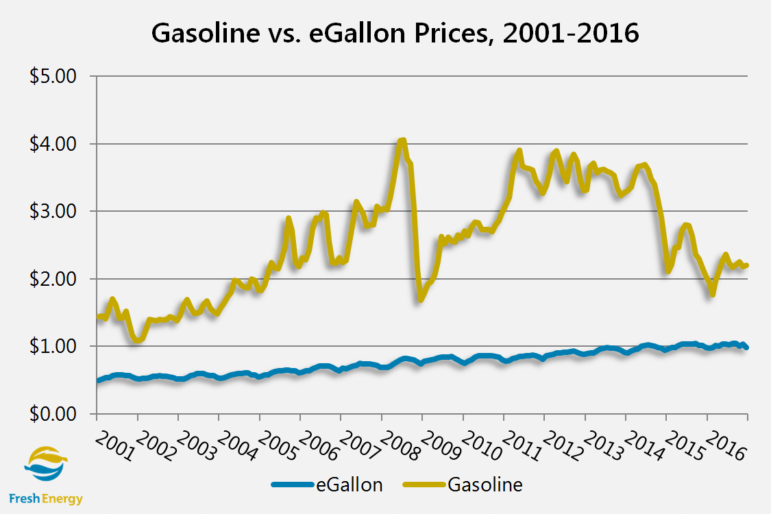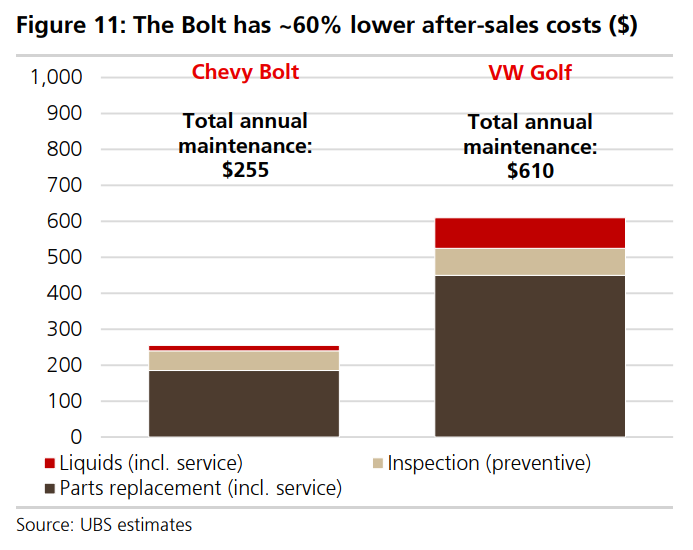 As drilling and processing oil gets dirtier and dirtier, our electric grid only continues to get cleaner. That, combined with much lower fuel and maintenance costs compared to gas vehicles, make electric cars and buses a tremendous opportunity for clean energy progress.
As drilling and processing oil gets dirtier and dirtier, our electric grid only continues to get cleaner. That, combined with much lower fuel and maintenance costs compared to gas vehicles, make electric cars and buses a tremendous opportunity for clean energy progress.
For a state like Minnesota, transitioning to electric transportation is a particularly attractive opportunity because we currently rely purely on imported fuels. But electric cars and buses can be powered by local utilities—growing demand for local wind and solar that’s already been shown to be a big economic boon for Minnesota utilities.
Better for the grid
Electric vehicles and renewable energy are like peanut butter and jelly: They’re great on their own, but they’re so much better together. Electric vehicles save money and are better for the environment, and wind energy is the lowest-cost way to make electricity in Minnesota. When combined, renewable energy makes electric vehicles cleaner and cheaper, and at the same time, electric vehicles can help integrate variable renewable electricity generation.
Better for our air
Gasoline vehicles don’t just harm the climate, they also wreak havoc on public health. Most troublingly, the cost of this pollution is not distributed equally; it falls disproportionately on children, the elderly, low-income people, and people of color. Electric vehicles reduce these harmful emissions, and more importantly, move them out of dense urban areas.
Lower fuel costs 
Electricity is much less expensive than gasoline, and the price has been less volatile over time. The U.S. Department of Energy has a comparison called the “eGallon,” which compares the cost of fueling an electric vehicle and a gas vehicle. If you compare those costs over time, choosing electric is a no-brainer.
Much less maintenance 
In general, electric cars are so cheap to maintain because there are hardly any moving parts. A recent report by the financial services company UBS helps put it in perspective. For example, the Chevrolet Bolt (coming to Minnesota this year) has just 24 moving parts. A similar gas car has 149. Even parts that are similar, like brakes, don’t get the same wear and tear on an electric model because regenerative braking does most of the work slowing down the car. Overall, UBS estimates that annual maintenance costs for the Bolt will be 60 percent lower than its gas counterpart.
Low hanging fruit
Transitioning our transportation system from gas to electricity will take some time, but there is already plenty of low hanging fruit to pursue. Because much of the savings for electric cars and buses stems from low fuel and maintenance costs, the biggest cost savings will inherently come by transitioning vehicles that drive the most miles—fleets and transit. We’ve already been working with government fleet and transit authorities to establish action plans to go electric. That, combined with more and more affordable used options, get the wheels turning on electric transportation.

